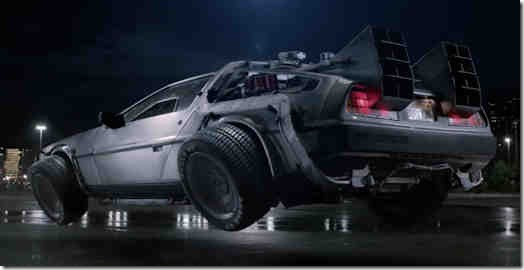 I picked a pupil up for a lesson tonight from his house. He’d already asked if we could finish at his girlfriend’s place over in Cotgrave, which I had no problem with. Well, I say that, but I did have some small reservations, which grew as the lesson went on.
I picked a pupil up for a lesson tonight from his house. He’d already asked if we could finish at his girlfriend’s place over in Cotgrave, which I had no problem with. Well, I say that, but I did have some small reservations, which grew as the lesson went on.
I enjoy this job immensely, but there are two particular things which I have to admit I have nightmares about. One is to do with steering. I’ve been teaching for long enough to know that pupils can do things you’d think that no sane person would ever do. For example, a few months ago a girl who was a bit unpredictable behind the wheel in the first place was steering almost full-lock around a tight mini-roundabout to turn right when the ball on her nose ring (which she fiddles with incessantly) fell off at the precise moment she needed to steer left into the exit road. Who would ever have thought that a rational human being would instantly decide to let go of the steering wheel with both hands and plunge head-first into the foot well to try and catch the ball before it hit the floor in this situation? And in another example some years ago, a pupil was driving at 50mph down a long, straight, well-lit 60mph road, with other cars visible several hundred metres in front of us doing the same, when he suddenly decided we needed to make a 90° turn to the left. There was no left turn there anyway (not even anything resembling one), and even if there had been we couldn’t possibly have managed it at that speed, and nor should we have attempted to do so. He could never explain why he had tried (I remember his exact words: “I honestly don’t know why I did that”).
The second thing that gives me the heebie jeebies is when a pupil asks to be dropped off somewhere different to the pick up, and before I’ve had time to look it up. This is made worse when I attempt to identify the location with them and they can’t tell me anything other than “I know the way”. Those four simple words convey an absolute encyclopaedia of possible meanings, such as:
- I’ve only been once
- I was asleep on the back seat at the time
- And I was only four
- My mum (or dad) normally drives
- My mum (or dad) think they might have once heard of something called The Highway Code
- My mum (or dad) think that they once passed their driving test, but now they can’t remember
- I usually walk there
- I usually ride my bike there
- I’m aged 17-25 and beyond the end of my road (less if it’s a long road) I get lost
- I got lost the last two times I came here on my own
- I usually catch the bus
Young drivers are often so poor at navigation that they think 5cm on a map “isn’t very far” – even though they’re looking at a World projection printed on A4. With a big border. And cornering on two wheels with no signals (just like mum or dad) comes naturally. With all of this in mind, the conversation at the start of today’s lesson went something like this:
Where in Cotgrave do you need to be?
I know the way
Yes, but I don’t. What road does she live on?
Ummm.
[Groan] You don’t know the name of the road?
But I know the way
At this point, I jokingly explain much of what I’ve written above.
I don’t know how you “usually” get to Cotgrave, and there’s more than one way. Where is she near?
Ummm.
Is she near Ring Leas?
[A light seems to come on] Umm, I think.. ummm.
OK, we’ll head for Ring Leas and you can tell me where you’re going from there
It’s near Sainsbury’s
[I pause for a moment] But Ring Leas is nowhere near Sainsbury’s
I’ll know it when I see it
Yes, but I want to get there alive. We’ll head for Sainsbury’s then
We carry out the bulk of the lesson. Once we’ve done it, we strike out for Cotgrave along the A606 Melton Road. Just after the Wheatcroft Roundabout the conversation proceeds:
I normally take the next turn left
I know how to get to Cotgrave, just concentrate and you can tell me where you think you want to go later
I assumed that he meant he’d normally drive down Tollerton Lane (which is actually the fourth left from where we were), even though that would be a pointlessly longer way to get to Cotgrave. As we turned into Cotgrave Road (fifth left):
Yes, this is the way we come
But this isn’t “next left” like [I decide not to pursue it]… now concentrate on the road, it’s dark and narrow [and it’s snowing now]
As we approach Cotgrave:
It’s left at the Church
But Sainsbury’s is on the right
No, it’s this next road [pointing right at Mensing Avenue]
But the Church is a bit further down, and Sainsbury’s is on the right at the end of this road
No, there’s one here [Scrimshire Lane, second left, and on the right]
That’s the graveyard, the Church is on the left down there, and you said it was on the left. But this is the road she lives on, yes?
Ummm. Yes. I meant on the right.
[We turn into Scrimshire] Where does she live?
On the left just here [points]
What, down here? [Cherry Orchard]
No, down here [points left again]… where that car’s going [actually, into someone’s driveway]
You mean Ring Leas, then [which is just past it]?
Ummm.
So it’s down here? [I point at Ring Leas as we approach it]
No, it’s down here on the left
Several possible left turns later, we finally arrive – albeit about 1km beyond the point where our destination was “just here on the left” the first time.
Promise me you’ll buy a sat nav as soon as you pass.
I knew where it was
No you bloody didn’t. Not one of your directions was correct, and what do you think you would have done if you’d been driving on your own? You’d have taken that first turn back on the A606 and ended up in West Bridgford if you were lucky. Then you said it was “near Sainsbury’s” – it’s nowhere near.
It is
Sainsbury’s is over a mile away. Have you any idea how difficult it is to find an address when you don’t know a road name or house number, and are searching in a one-mile radius based only on visual recognition – in the dark? Your idea of this house being “near Sainsbury’s” is like saying “Nottingham is near Derby”. In global terms it is, but not if you’ve got to walk it wearing a blindfold!
Society is doomed, I tells ya!
And this is why I sometimes have those recurring nightmares.
 Andrew Jackson had an interview with Greater Manchester Police for a job in their IT department. The problem was that he stank of alcohol, and when casually questioned about whether he had found the interview location easily enough, commented that he’d had a job finding somewhere to park.
Andrew Jackson had an interview with Greater Manchester Police for a job in their IT department. The problem was that he stank of alcohol, and when casually questioned about whether he had found the interview location easily enough, commented that he’d had a job finding somewhere to park. I was watching TV just now, and an appeal came on for Syrian children asking for a donation of £3 to buy a blanket. I suddenly felt quite benevolent (actually, I do occasionally make donations, usually through DEC, and once or twice through crowdfunding websites). I usually resist formal charities like the plague – and I was reminded why, yet again.
I was watching TV just now, and an appeal came on for Syrian children asking for a donation of £3 to buy a blanket. I suddenly felt quite benevolent (actually, I do occasionally make donations, usually through DEC, and once or twice through crowdfunding websites). I usually resist formal charities like the plague – and I was reminded why, yet again. Over the last week or so I’ve noticed the sudden appearance in my stats of visits to the blog using the search term “applied coach approach”. Until the first one last week no one has EVER used that term before, now it is appearing multiple times per day.
Over the last week or so I’ve noticed the sudden appearance in my stats of visits to the blog using the search term “applied coach approach”. Until the first one last week no one has EVER used that term before, now it is appearing multiple times per day. As I mentioned in that recent story about the idiot who had allowed an it’s-a-fair-cop-I-did-it-where-do-I-pay £30 parking fine escalate into a £600-and-counting-here-come-the-bailiffs-again melodrama, I sometimes despair at the direction society seems to be heading.
As I mentioned in that recent story about the idiot who had allowed an it’s-a-fair-cop-I-did-it-where-do-I-pay £30 parking fine escalate into a £600-and-counting-here-come-the-bailiffs-again melodrama, I sometimes despair at the direction society seems to be heading.
 Hot on the heels of that last story about companies employing retards and allowing them to make business-shaping decisions, Sainsbury’s appears to have done it again with one of its Valentine’s Day crapola range items. They’re called Hugging Bear Mugs, and they come in pairs. You will note that – if you make the obvious connection based on visual appearance – they are both male.
Hot on the heels of that last story about companies employing retards and allowing them to make business-shaping decisions, Sainsbury’s appears to have done it again with one of its Valentine’s Day crapola range items. They’re called Hugging Bear Mugs, and they come in pairs. You will note that – if you make the obvious connection based on visual appearance – they are both male. I’ve written before of my still-recurring nightmares about Teamworking and the hell I had to put up with for the final ten years of my time in the rat race. Not that long ago, Sainsbury’s made the mistake of allowing “the Team” to become involved in things which were really none of their business, and which were
I’ve written before of my still-recurring nightmares about Teamworking and the hell I had to put up with for the final ten years of my time in the rat race. Not that long ago, Sainsbury’s made the mistake of allowing “the Team” to become involved in things which were really none of their business, and which were  I was on a lesson with a pupil today and I asked her how she was getting on studying for her theory test. I asked her to identify a pedestrian crossing we had just passed, and it was clear she was a little confused. Next time we stopped, I got my sketch pad out and went through the different types to show her how understanding them made answering theory test questions much easier than just trying to remember the answers.
I was on a lesson with a pupil today and I asked her how she was getting on studying for her theory test. I asked her to identify a pedestrian crossing we had just passed, and it was clear she was a little confused. Next time we stopped, I got my sketch pad out and went through the different types to show her how understanding them made answering theory test questions much easier than just trying to remember the answers. I picked a pupil up for a lesson tonight from his house. He’d already asked if we could finish at his girlfriend’s place over in Cotgrave, which I had no problem with. Well, I say that, but I did have some small reservations, which grew as the lesson went on.
I picked a pupil up for a lesson tonight from his house. He’d already asked if we could finish at his girlfriend’s place over in Cotgrave, which I had no problem with. Well, I say that, but I did have some small reservations, which grew as the lesson went on. I’ve seen this in various newspapers today (
I’ve seen this in various newspapers today (